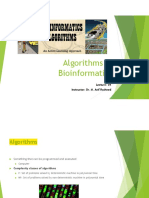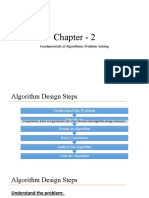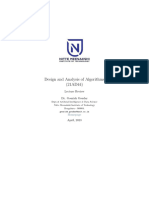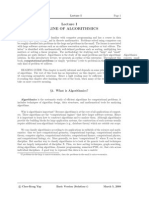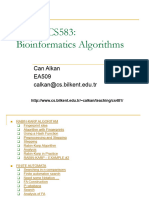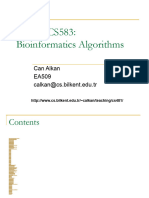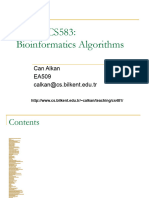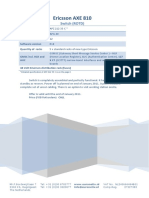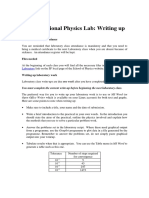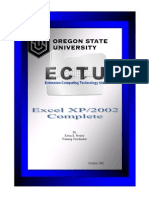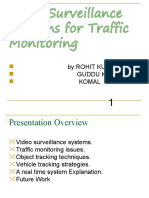0% found this document useful (0 votes)
59 views37 pages00 Intro
This document provides information about the CS481/CS583 Bioinformatics Algorithms course. It includes details such as class times, location, grading structure, textbooks, and assumptions. The course covers algorithms developed for problems in bioinformatics, including sequence analysis, graph theory, and data mining. It is not intended to teach biology concepts but assumes students have a background in computer science topics like data structures, algorithms, and programming. Common algorithm design techniques for bioinformatics problems discussed include exhaustive search, greedy algorithms, and dynamic programming.
Uploaded by
Big BerthaCopyright
© © All Rights Reserved
We take content rights seriously. If you suspect this is your content, claim it here.
Available Formats
Download as PDF, TXT or read online on Scribd
0% found this document useful (0 votes)
59 views37 pages00 Intro
This document provides information about the CS481/CS583 Bioinformatics Algorithms course. It includes details such as class times, location, grading structure, textbooks, and assumptions. The course covers algorithms developed for problems in bioinformatics, including sequence analysis, graph theory, and data mining. It is not intended to teach biology concepts but assumes students have a background in computer science topics like data structures, algorithms, and programming. Common algorithm design techniques for bioinformatics problems discussed include exhaustive search, greedy algorithms, and dynamic programming.
Uploaded by
Big BerthaCopyright
© © All Rights Reserved
We take content rights seriously. If you suspect this is your content, claim it here.
Available Formats
Download as PDF, TXT or read online on Scribd
/ 37
